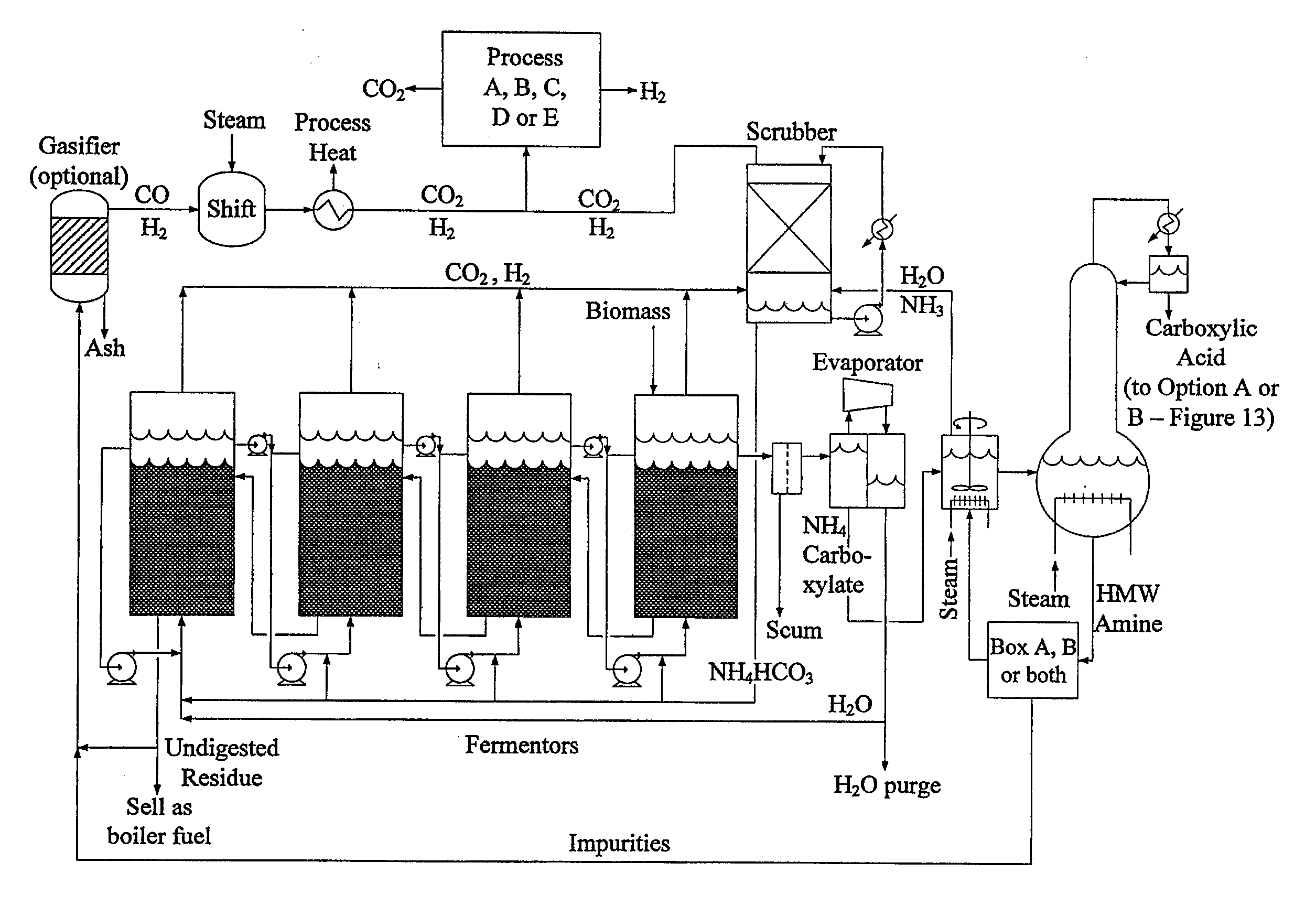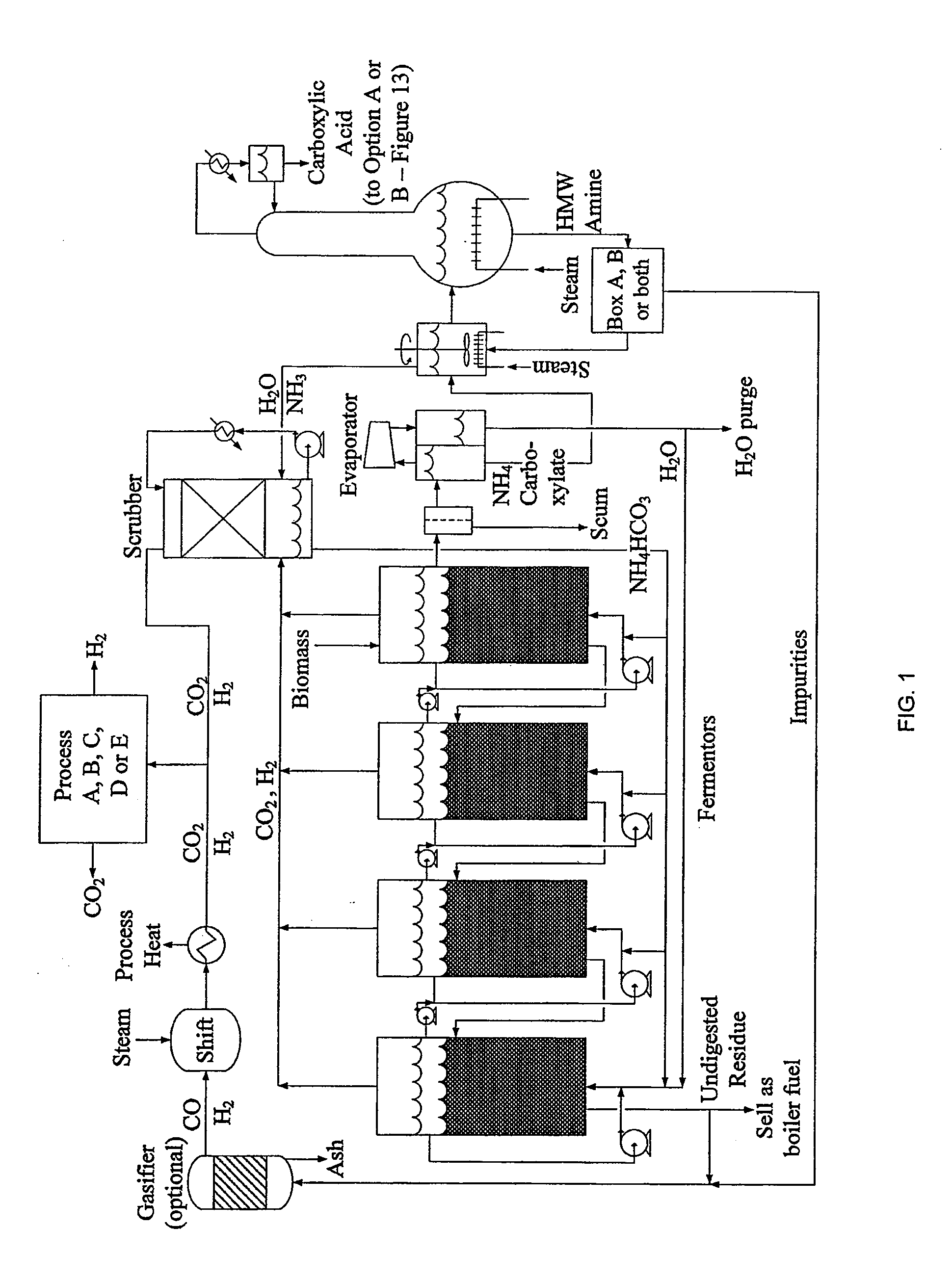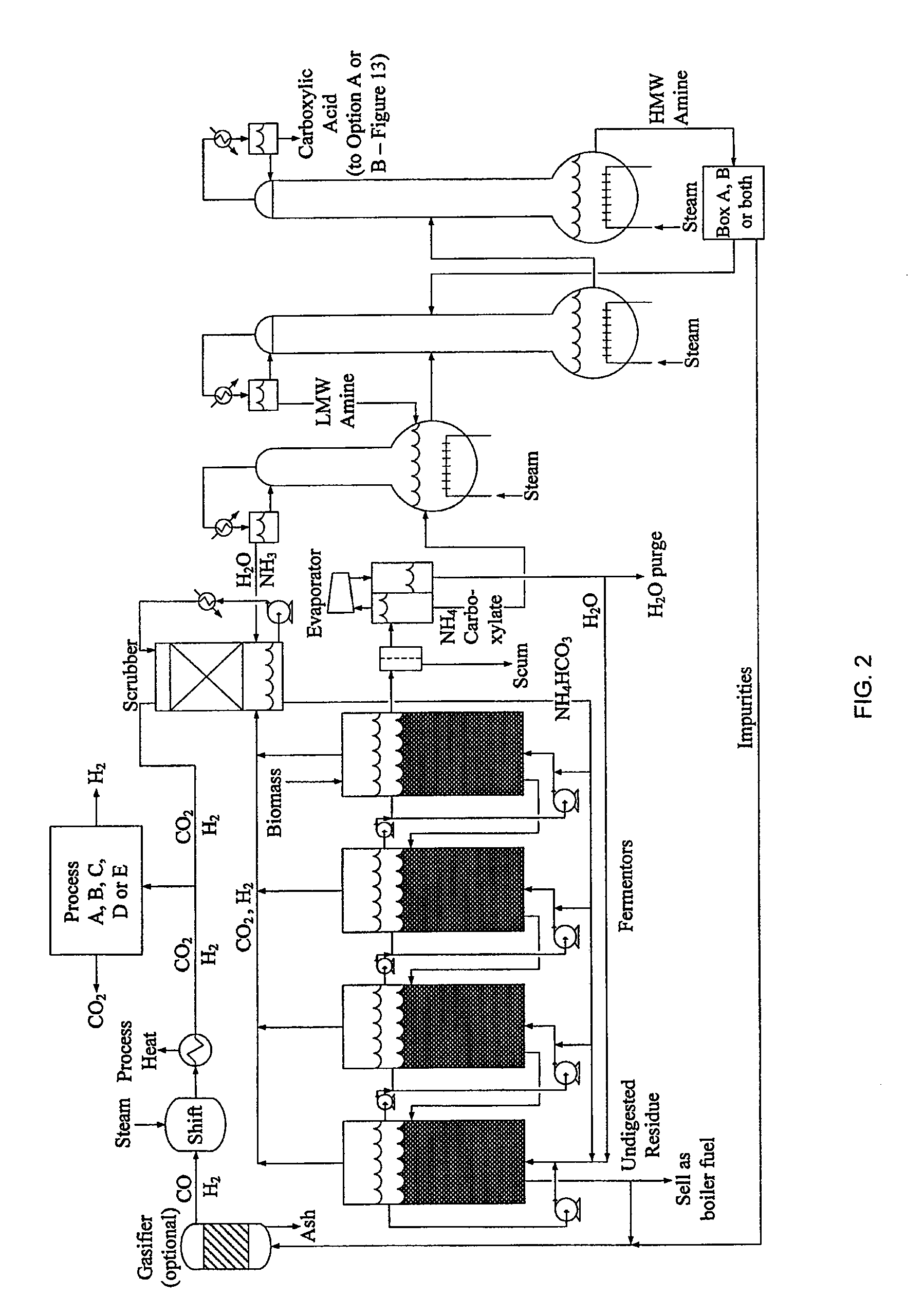Hydrogen Processing, And Impurity Removal And Cleaning Methods In A Biomass Conversion Process
- Summary
- Abstract
- Description
- Claims
- Application Information
AI Technical Summary
Benefits of technology
Problems solved by technology
Method used
Image
Examples
example 1
Fermentation Make Up
[0072]The fermentation mixture contained an 80% paper and 20% manure ratio with a final make up of 16 grams of paper fines, 4 grams of manure, 225 mL of water mixture (H2O, Na2S, Cysteine, HCl), and 25 mL of seed inoculums, the source of the microorganisms, six 1-L reaction flasks, one reactor with exactly half of all the components in a 500-mL flask, and two reactors with exactly 3 / 20 the amount of the initial components in a 150-mL reaction bottle, all fitted with a septum top. The reactants were mixed together and then nitrogen purged for 5 minutes before being sealed and continuously agitated in an incubator with a temperature near 27° C. Minimum air exposure was allowed whenever the reactor was opened (for example, to fix a broken needle) by way of nitrogen purge. Samples were set up every 2 days for 17 days so that gas concentrations could be collected and analyzed at different times during the fermentation (Domke, 2004). The objective was to determine the ...
example 2
pH Maintenance
[0082]One main problem faced in batch anaerobic fermentations is maintaining the pH near neutrality with anaerobic conditions so that the microorganisms can survive and perform the fermentation. To accomplish this task, the fermentation containers were fitted with septum stoppers and 22-gauge needles attached to a three-way valve and a syringe were used to draw and test each sample. The pH was tested with pH paper ranging from 5.0 to 10.0 in 0.5 increments. If the pH was too low, a predetermined amount of 0.016 M ammonium bicarbonate solution was added to the fermentation to bring the pH back to seven. The amount added was determined based on titrations performed using diluted glacial acetic acid and the same ammonium bicarbonate solution seen in Table 2 and FIG. 18. The pH was tested as specific amounts of the ammonium bicarbonate solution were added until the pH returned to 7.0. FIG. 18 provided an approximate amount of ammonium bicarbonate solution needed to return ...
example 3
Venting
[0084]Another concern addressed during this experiment was that hydrogen is an extremely small molecule and the container used during the fermentation was not proven to be hydrogen tight. Therefore, a thick septum stopper and a crimp seal were used to best seal the opening of the container and a 22-gauge needle was used to attach the containers to the venting line. A 25-gauge needle was initially used, but ended up being too short to allow samples to be taken, leading to the use of the 22-gauge needles. Another problem with the needles was that they would leave piercing holes in the septum, which made the septum appear flimsy; this led to the thought that they could possibly leak hydrogen gas. Therefore, once the needles had been removed on the second to last day of the experiment to allow pressure build up, all the septa were replaced so that the largest amount of hydrogen could be contained. During this procedure, the Day 13 reactor was cracked making it unusable; the ferme...
PUM
 Login to View More
Login to View More Abstract
Description
Claims
Application Information
 Login to View More
Login to View More - R&D
- Intellectual Property
- Life Sciences
- Materials
- Tech Scout
- Unparalleled Data Quality
- Higher Quality Content
- 60% Fewer Hallucinations
Browse by: Latest US Patents, China's latest patents, Technical Efficacy Thesaurus, Application Domain, Technology Topic, Popular Technical Reports.
© 2025 PatSnap. All rights reserved.Legal|Privacy policy|Modern Slavery Act Transparency Statement|Sitemap|About US| Contact US: help@patsnap.com



